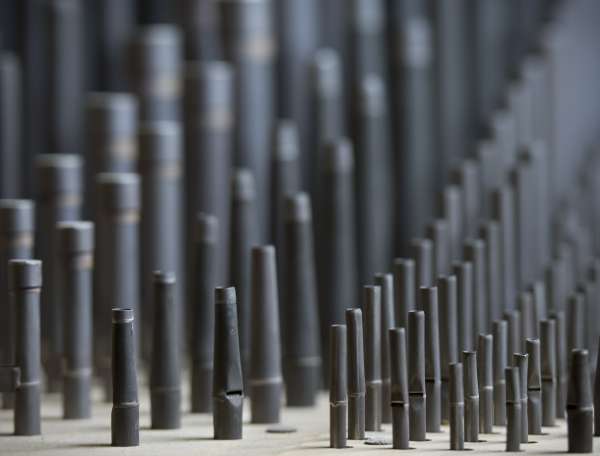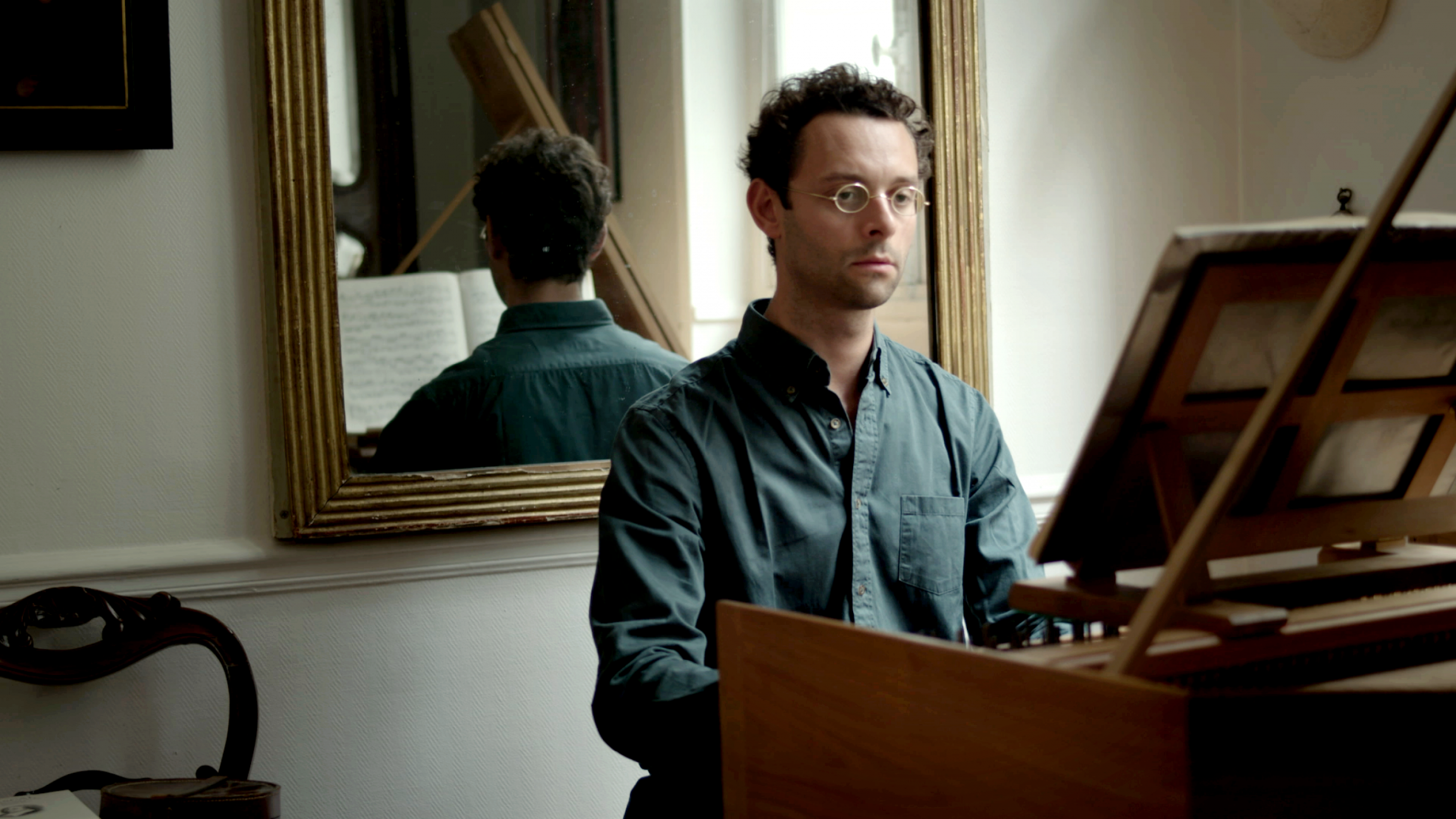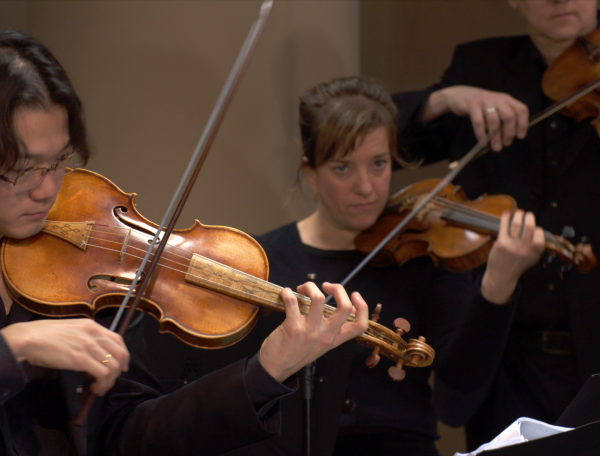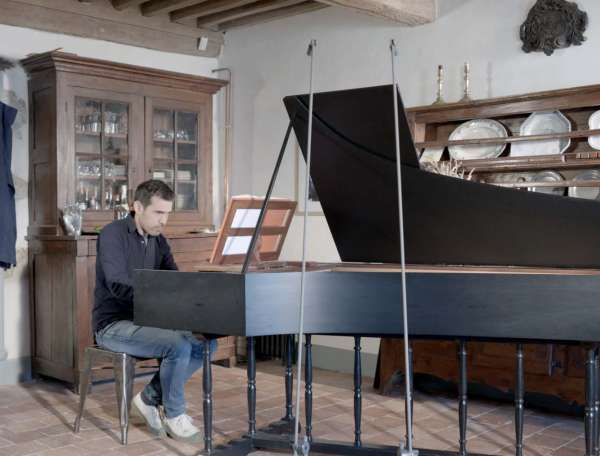

The Well-Tempered Clavier I No. 16 in G minor
BWV 861 performed by Benjamin Alard
at home in Paris, France
Behind the music
Bach's hall of mirrors
By cutting and pasting, Bach conjures up an infectious little masterpiece from next to nothing
A sensual trill sets the tone of this pleasant prelude. It is a piece in three tempi for three parts – with sustained notes in one part, a decorative little motif with fast notes in another and a calmly rippling part in between. And all of this keeps recurring in different configurations. There is no hurry, even around the two harmonic highlights in the middle of the big tension curve. The drawn-out ending almost seems to miss its target, especially when the trilled final note once again casts doubt on everything.
In the fugue theme, Bach reaches the fundamental tone only after a few brisk steps and a big interval. And the answer is even more exciting. Instead of new material, Bach takes the two parts of the theme, inverts them vertically and changes their places. This creates neat sets of theme and mirrored counter-theme, providing more than enough rhythmic and melodic material for the ‘episodes’ – sections (in this case often very short ones) in which the theme does not appear. It is infectious!
Das Wohltemperirte Clavier, BWV 846-893
Composing 48 keyboard pieces in all 24 keys was the sort of challenge Bach enjoyed. In each of the two parts of the Wohltemperirte Clavier, he brought together the musical couple prelude and fugue 24 times; twelve in minor keys and twelve in major. In the preludes, he gave free rein to his imagination, and demonstrated mathematical tours de force in the fugues. In contrast to the iron discipline Bach had to apply to his church compositions, here he could abandon himself to intellectual Spielerei without worrying about deadlines.
The first part of the Wohltemperirte Clavier dates from 1722, although it contains some music that was written in the preceding five years. There is less clarity about the history of part two. Bach compiled this second manuscript only around 1740, although once again some of the preludes and fugues it contains date from a much earlier period. Bach described the target group for this collection of pieces as follows: ‘Zum Nutzen und Gebrauch der Lehr-begierigen Musicalischen Jugend, als auch dere in diesem studio schon habil seyenden besonderem ZeitVertreib’ (For both the education of the industrious musical youngster and the enjoyment of those well-versed in this material’).
- BWV
- 861
- Title
- Prelude and fugue in G minor
- Epithet
- no. 16 from The Well-Tempered Clavier I
- Instrument
- harpsichord
- Genre
- harpsichord works
- Serie
- Das Wohltemperirte Clavier I
- Year
- 1722 or earlier
- City
- Cöthen (or Weimar?)
With support from
Prins Bernhard Cultuurfonds
Extra videos
Vocal texts
Original
Translation
Credits
-
- Release date
- 12 February 2016
-
- Recording date
- 18 August 2015
-
- Location
- Paris, France
-
- Harpsichordist
- Benjamin Alard
-
- Harpsichord
- Alain Anselm (1990) after a 17th century French model.
-
- Film directors
- Jan Van den Bossche, Hanna Schreuders
-
- Camera
- Gijs Besseling
-
- Music production, editing and mix
- Guido Tichelman
-
- Interview
- Gijs Besseling
-
- Producers
- Hanna Schreuders, Jessie Verbrugh
-
- With support from
- Prins Bernhard Cultuurfonds
Discover
Help us to complete All of Bach
There are still many recordings to be made before the whole of Bach’s oeuvre is online. And we can’t complete the task without the financial support of our patrons. Please help us to complete the musical heritage of Bach, by supporting us with a donation!

